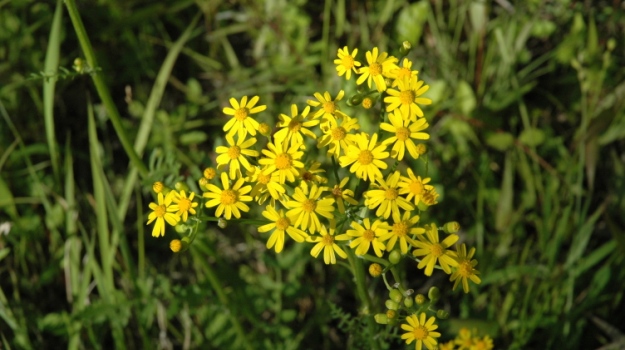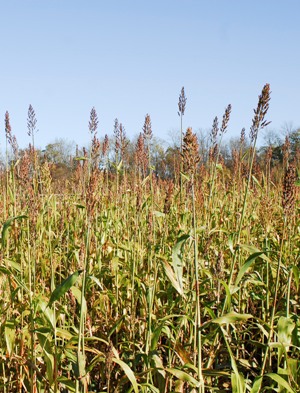
Editor’s Note: Jesse Raley is the marketing manager for Mossy Oak’s Nativ Nurseries. Good wildlife management and increasing wildlife on the properties you own or hunt on involves much more than just planting green fields. To have more wildlife on your property, consider planting fruit trees and nut trees and various types of grasses and shrubs that produce food and cover for wildlife. We’ve asked Raley to tell us why we need to consider planting trees, shrubs and native grasses to increase food and habitat for wildlife. By starting now, you can decide where and when to plant additional food and habitat for this fall.
Nativ Nurseries also has studied the planting of native grasses and believes they can be very beneficial to provide food for wildlife. Many of the native grasses that once grew throughout this country that the wildlife used for food have been lost because of the growth of invasive species. Deer like to come from thick cover to feed in a green field. Planting native grasses around your green field to provide cover for deer to move through or bed in can increase the value of your green fields and your nut and fruit trees. So, native grasses are valuable as a food source and cover for wildlife. Also many ground nesting birds like quail and turkeys will use those native grasses for nesting. These birds often eat the seeds of native grasses too.
 We also offer wildflowers at Nativ Nurseries. Although hunters don’t think about flowers when hunting deer and turkey, deer and turkey do eat wildflowers. The presence of wildflowers on your land also increases the number of birds and bees that help pollinate your fruit trees, nut trees and some of your other wildlife plantings. Wildflowers and native grasses also draw insects for ground nesting birds to eat.
We also offer wildflowers at Nativ Nurseries. Although hunters don’t think about flowers when hunting deer and turkey, deer and turkey do eat wildflowers. The presence of wildflowers on your land also increases the number of birds and bees that help pollinate your fruit trees, nut trees and some of your other wildlife plantings. Wildflowers and native grasses also draw insects for ground nesting birds to eat.
Customers also want to know the best way to plant trees and fertilize trees for maximum production. Depending on the size of your root ball, we suggest that you dig your hole, chop up that dirt, put your tree in the hole and then place the dirt you’ve chopped up over the root ball. If you're planting a tree 2-years old or older, add some 13-13-13 fertilizer. Then once a year, use about a cup of fertilizer to sprinkle around the tree, depending on the size and the age of the tree you’re planting. When the trees are younger, the fertilizer will help them grow faster. When the trees become older, the fertilizer will help the trees produce more mass, whether that mass is acorns or fruit. By planting fruit trees, nut trees and native grasses around your green field now, the deer has everything he needs to stay on your property, including food and cover. Therefore, the deer you raise on your property are much more likely to stay there.
Sanctuaries:
If you’ll plant a 1-acre food plot or even a 1/2-acre one close to or in thick cover, plant fruit trees and nut trees around it, and then designate that food plot and that area as a sanctuary, you’ve created a sanctuary for older age-class-bucks on your property. Too, this sanctuary may draw older-age-class bucks from other surrounding properties where there is no sanctuary. If deer have food, water and a sanctuary, then they have no reason to leave your property.
You can learn more about fertilizing you Nativ Nurseries’ trees by watching the videos on the Nativ Nurseries YouTube page.
Day 3: Nativ Nurseries’ Jesse Raley Tells about Fruit Trees for Wildlife
Tomorrow: Jesse Raley Names the Most Popular Nut and Fruit Trees at Mossy Oak’s Nativ Nurseries




























